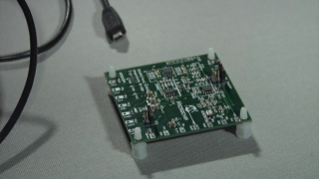Softei & Microchip PIC-IoT WA Development Board
Win a Microchip PIC-IoT WA Development Board (EV54Y39A) from Softei and if you don’t win, receive a 15% off coupon for this board, plus free shipping.
The PIC-IoT WA Development Board combines a powerful PIC24FJ128GA705 MCU, an ATECC608A CryptoAuthentication™ secure element IC and the fully-certified ATWINC1510 Wi-Fi® network controller which provides the most simple and effective way to connect your embedded application to Amazon Web Services (AWS). The board also includes an on-board debugger and requires no external hardware to program and debug the MCU.
The PIC24FJ128GA705 is a 16-bit microcontroller featuring up to 128KB of ECC Flash, 16KB of RAM and eXtreme Low Power. It has 12bit ADC at 200ksps with up to 14 analog inputs, 3 comparators and CTMU for touch applications. Available in 28 pin, 44 pin and 48 pin packages. This family is ideally suited for general purpose applications.
Out of the box, the MCU comes preloaded with firmware that enables you to quickly connect and send data to the AWS platform using the on-board temperature and light sensors. Once you are ready to build your own custom design, you can easily generate code using the free software libraries in MPLAB Code Configurator (MCC).
The PIC-IoT WA Board is supported by MPLAB® X IDE and features the following elements:
- The on-board debugger (PKOB nano) supplies full programming and debugging support through MPLAB X IDE. It also provides access to a serial port interface (serial to USB bridge) and one logic analyzer channel (debug GPIO).
- The on-board debugger enumerates on the PC as a mass storage interface device for easy ‘drag and drop’ programming, Wi-Fi configuration, and full access to the microcontroller application Command Line Interface (CLI).
- A mikroBUS™ socket allows for the ability to expand the board capabilities with the selection from 450+ sensors and actuators options.
- A light sensor used to demonstrate published data.
- Microchip MCP9808 high-accuracy temperature sensor used to demonstrate published data and MCP73871 Li-Ion/LiPo battery charger with power path management.




